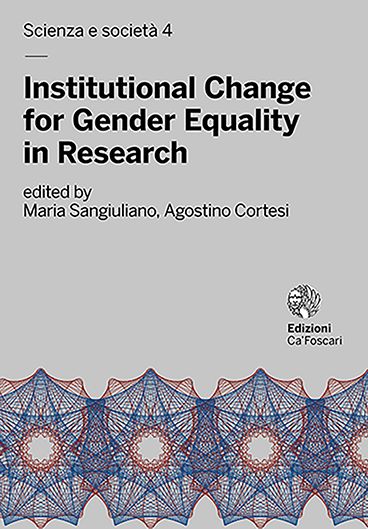- search 265 views
- file_download 5 download
- keyboard_capslock metadata
-
mark_email_readIscriviti alla newsletter
From Planning to Tailoring and Implementing GEPs: Lessons Learned within the EQUAL-IST Project
abstract
This chapter is focused on the H2020 EQUAL-IST project outcomes and it analyzes the first iteration of Gender Equality Plans implementation taking place between October 2017 and May 2018 and focused on 4 main intervention areas, namely Institutional Communication, Human Resources and Management Practices, Teaching and Services for (Potential) Students, Research Design. Based on internal reports provided by the 6 involved research institutions, we classified all the implemented actions as ‘structural change actions’ or ‘preparatory actions’ (following up the study carried out in Chapter 1 by Sangiuliano, Canali, Madesi) and as ‘internally-oriented actions’ or ‘externally-oriented actions’. The peculiarities of GEP implementation in the Information Sciences and Technology (IST) and Information and Communications Technology (ICT) disciplines appeared to be a common effort from all involved institutions to attract more girls in ICT studies: indeed, the gender leak in the ICT-IST recruitment pipeline starts at the enrollment at university, with extremely low numbers of female students. We therefore aimed at critically understanding if the notable amount of actions to attract more female students, which were initiated within the EQUAL-IST project during the first iteration of GEP implementation, implies a risk to bend the process towards more externally-oriented actions, which are less likely to impact internal power structures, at least in the short run. The chapter also intends to explore whether structural change actions, which have the potential to go beyond mere raising awareness on the topics at stake, tend to be concentrated in the Human Resources and Management Practices area.
Keywords: Research organizations • Sustainability • Structural changes • Information Sciences and Technology • Implementation • Gender Equality Plans (GEPs)
